Please note that this is meant for information purposes only and is not medical advice. You should always follow the advice of your local medical professionals and health office. Wearing a mask is a supplement to (and not a replacement for) following all other applicable guidelines such as handwashing, not touching your face, social distancing, and otherwise staying as healthy as you can.
With the COVID-19 pandemic and many countries mandating wearing masks in public, we had masks like this made for every employee at our company:
They come with a little pocket to slide in an additional filter if desired:
These disposable duster rags from 3M were easily sourced at nearby markets:
So I decided to see how much these might assist in particle filtration. First, I tested the ambient particle count:
The left number is a count of particles greater than about 1micron per 1/100 cubic foot. The right number is a count of particles greater than about 2.5microns per 1/100 cubic foot.
(“pm2.5” is approximately equal to the left number minus the right number divided by 100.)
So I tested by holding the mask with no filter in it over the air inlet to the particle counter, approximating the level of fit of the mask over a face:
That is a 40% drop in pm2.5 and an 80% drop in number of particles over 2.5 micron, which is substantially higher.
Then I cut up the filter to the size of the mask:
And insert it into the filter pocket of the mask:
Now to test again, I retest the ambient particle count in case it changed, and test with the mask with filter inserted:
This corresponds to about a 65% drop in pm2.5 as well as a 65% drop in particles greater than 2.5 micron.
If you noticed that the filter alone had a greater drop in particles greater than 2.5 microns… I wondered about that too. I’m wondering if the mask itself has some of the larger >2.5micron particles in the new fabric itself and is releasing them to the particle counter. (It was only washed once.) Or else the mask allows more air to slip around the edges of the filter. Still, a 65% drop is not bad at all.
Just for comparison, I tried the same experiment with a disposable surgical mask you can buy in any drug store here in Thailand:
This corresponds to a 50% drop in pm2.5 and a 40% drop in the number particles larger than 2.5 microns.
I’ve also read you can cut up and use vacuum cleaner bags, but these dust rags were easier to source here.





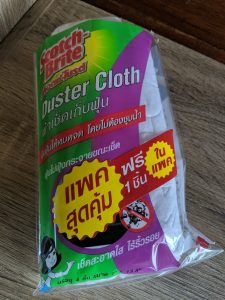
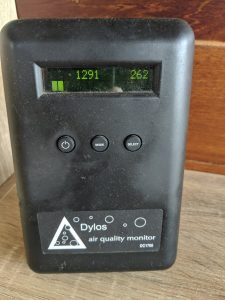
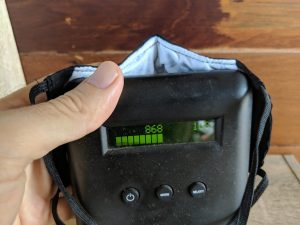
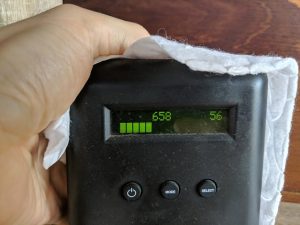
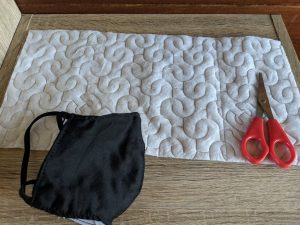
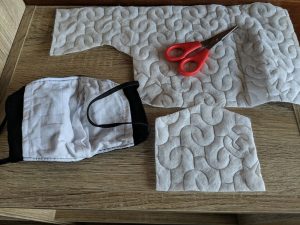
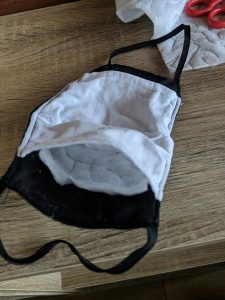
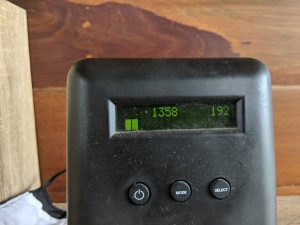
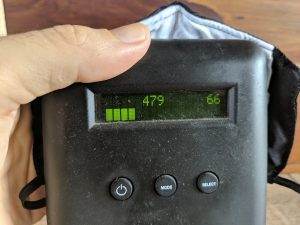
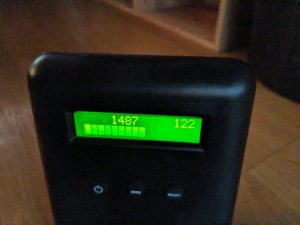
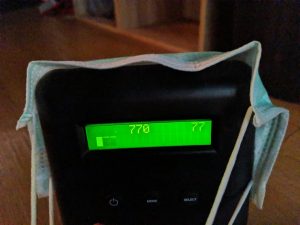
👍👍👍👍👍
This comment has been removed by the author.